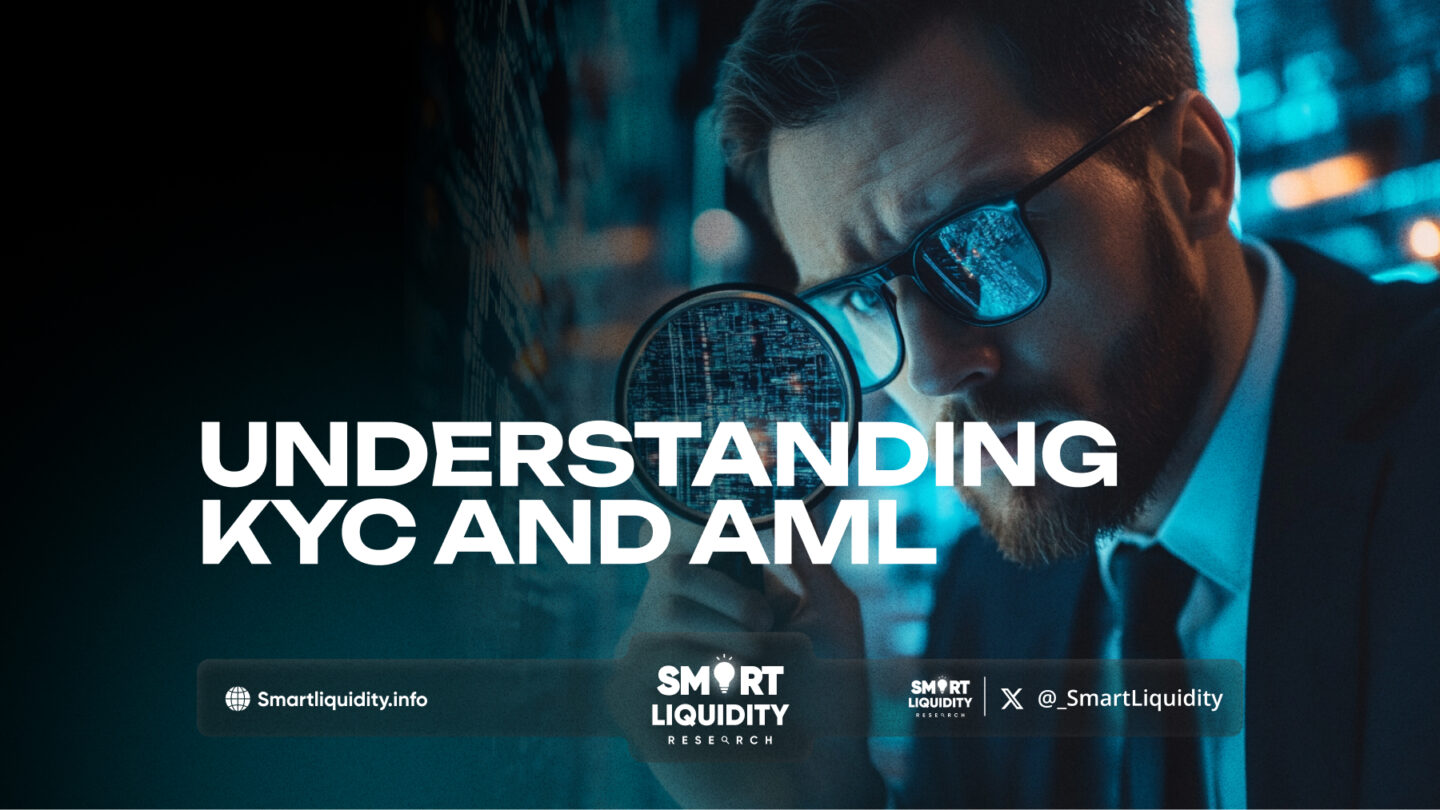Understanding KYC and AML


In today’s increasingly digital and interconnected world, the importance of knowing your customer (KYC) and anti-money laundering (AML) practices cannot be overstated. These processes are foundational for financial institutions, ensuring that they operate within legal frameworks, protect against financial crimes, and foster trust among their clientele. This article delves into the intricacies of KYC and AML, exploring their significance, implementation, and the challenges that come with them.
What is KYC?
Know Your Customer (KYC) refers to the process by which financial institutions and other regulated companies verify the identity of their clients. The primary goal of KYC is to ensure that customers are who they claim to be, which helps in mitigating the risks associated with illegal activities, such as money laundering, fraud, and terrorism financing.
KYC processes typically involve collecting and verifying various forms of identification and information from customers. This includes:
- Personal Identification Information: This involves gathering documents like passports, driver’s licenses, or national IDs that confirm the identity of the customer.
- Address Verification: Customers may be required to provide utility bills, bank statements, or other documents to verify their residential address.
- Financial History: Institutions may also examine a customer’s financial history to assess their risk level, ensuring that their financial activities align with their declared income and employment.
- Business Verification (for corporate clients): For corporate entities, KYC processes involve verifying the legitimacy of the business, its ownership structure, and the identities of key stakeholders.
The KYC process is crucial for several reasons:
- Preventing Financial Crime: By verifying the identity of customers, institutions can identify and prevent suspicious activities that could lead to money laundering, fraud, or terrorist financing.
- Compliance with Regulations: Regulatory bodies around the world mandate KYC as a necessary process for financial institutions. Non-compliance can lead to hefty fines and reputational damage.
- Building Trust: A rigorous KYC process helps in establishing trust between the financial institution and its customers. Customers feel more secure knowing that the institution takes their security seriously.
- Risk Management: By understanding the customer’s identity and financial background, institutions can better assess the risk of doing business with them, allowing for informed decision-making.
What is AML?
Anti-Money Laundering (AML) refers to the set of procedures, laws, and regulations designed to prevent the practice of generating income through illegal actions. AML regulations require institutions to monitor transactions and report any suspicious activities that may indicate money laundering or terrorist financing.
Key components of an AML framework include:
- Customer Due Diligence (CDD): This involves verifying the identity of customers and understanding the nature of their financial activities. Enhanced due diligence (EDD) may be required for higher-risk customers.
- Transaction Monitoring: Financial institutions must monitor customer transactions on an ongoing basis. This includes identifying unusual or suspicious activities that could indicate money laundering.
- Reporting Obligations: Institutions are required to report any suspicious activities to the relevant authorities. This is often done through Suspicious Activity Reports (SARs) or Suspicious Transaction Reports (STRs).
- Record Keeping: Institutions must maintain records of all transactions and customer information for a specified period, allowing authorities to trace and investigate potential money laundering activities.
The Relationship Between KYC and AML
KYC and AML are closely intertwined. While KYC focuses on verifying customer identity and assessing risk, AML encompasses a broader range of activities aimed at preventing and detecting money laundering and related crimes. KYC is a critical component of a comprehensive AML program, as understanding who your customer is can significantly enhance an institution’s ability to detect suspicious activities.
Global Regulatory Landscape
The regulatory environment for KYC and AML is complex and varies from one jurisdiction to another. However, some key global regulations and organizations provide a framework for these practices:
- Financial Action Task Force (FATF): An intergovernmental body that sets international standards for AML and combating the financing of terrorism (CFT). FATF recommendations are widely adopted by countries to shape their national AML/CFT regulations.
- The USA PATRIOT Act: Enacted after the September 11, 2001 attacks, this legislation significantly expanded the scope of AML regulations in the United States, emphasizing KYC as a critical component of AML efforts.
- The European Union’s 5th AML Directive (5AMLD): This directive strengthens the EU’s AML/CFT regulations, particularly in relation to virtual currencies and prepaid cards, and reinforces KYC requirements for financial institutions.
- The UK’s Money Laundering Regulations 2017: These regulations transpose the EU’s 4th AML Directive into UK law, outlining strict KYC and AML requirements for businesses operating within the UK.
Challenges in Implementing KYC and AML
Despite the importance of KYC and AML processes, financial institutions face several challenges in implementing them effectively:
- Cost and Resource Intensive: Implementing comprehensive KYC and AML programs requires significant investment in technology, training, and human resources. For smaller institutions, these costs can be prohibitive.
- Balancing Customer Experience with Compliance: Stringent KYC processes can lead to customer frustration, particularly if they are perceived as overly invasive or time-consuming. Institutions must balance compliance requirements with the need to provide a seamless customer experience.
- Evolving Regulatory Landscape: The regulatory environment for KYC and AML is constantly evolving, requiring institutions to stay abreast of changes and adapt their processes accordingly. This can be particularly challenging for multinational institutions operating in multiple jurisdictions.
- Technological Challenges: As financial transactions increasingly move online, institutions must adopt advanced technologies like artificial intelligence (AI) and machine learning (ML) to detect suspicious activities. However, integrating these technologies into existing systems can be complex and costly.
- Data Privacy Concerns: The collection and storage of personal information as part of the KYC process raise significant data privacy concerns. Institutions must ensure that they comply with data protection regulations, such as the General Data Protection Regulation (GDPR) in the EU, while also fulfilling their KYC obligations.
Future Trends in KYC and AML
The landscape of KYC and AML is continuously evolving, driven by technological advancements and changing regulatory requirements. Some emerging trends include:
- Digital Identity Verification: As more financial transactions move online, the use of digital identity verification technologies, such as biometrics and blockchain, is becoming increasingly common. These technologies offer a more secure and efficient way to verify customer identities.
- AI and Machine Learning: AI and ML are playing an increasingly important role in AML, particularly in the areas of transaction monitoring and risk assessment. These technologies can analyze large volumes of data to detect patterns and identify potentially suspicious activities more accurately than traditional methods.
- RegTech: The rise of regulatory technology (RegTech) solutions is helping institutions automate and streamline their KYC and AML processes, reducing the burden of compliance while improving accuracy and efficiency.
- Collaborative Approaches: Financial institutions are increasingly collaborating with each other and with regulatory bodies to share information and best practices in the fight against money laundering. This collaborative approach is expected to become more common as institutions recognize the benefits of working together to combat financial crime.
Conclusion
KYC and AML are essential components of the financial industry’s efforts to prevent and combat financial crime. While implementing these processes presents significant challenges, they are crucial for maintaining the integrity of financial systems and ensuring compliance with global regulations. As technology continues to evolve, financial institutions will need to stay agile, adopting new tools and approaches to meet the demands of an ever-changing regulatory landscape. Ultimately, the success of KYC and AML efforts hinges on the ability of institutions to strike a balance between stringent compliance and a positive customer experience, ensuring that they protect their customers and the broader financial system from the risks of financial crime.




